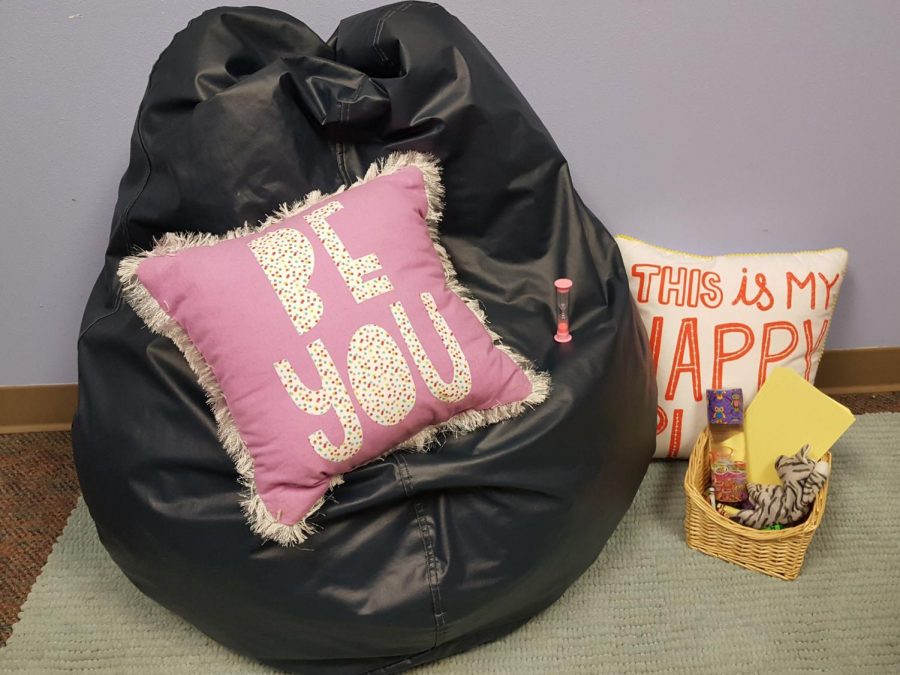Franklin Elementary incorporates ‘cozy corners’ to classrooms
Quiet areas encourage constructive emotional outlets, self-soothing
Stephanie Bray says a classroom’s “cozy corner,” like the one pictured above at Franklin Elementary School, provides a space for students to decompress in the classroom.
February 6, 2019
Cozy corners have been implemented into Franklin Elementary classrooms to help students self-regulate their emotions during the school day.
Franklin Elementary Principal Stephanie Bray said cozy corners are quiet areas in classrooms where students may go to decompress and take a breath. The average amount of time spent in the area is five minutes.
Bray said teachers maintain their autonomy when it comes to specifics. Teachers organize the space and decide with their class how to use it during the day. The areas usually have pillows, something to sit on and other comforting items.
She said teachers can check in with students or have the students use a timer while they are in the space. In many situations, students go back to their desk before their allotted time has passed. The process allows students to present themselves with dignity while organizing their emotions.
Some teachers have writing materials in their cozy corners, Bray said. This allows students to write about how they are feeling or write a letter to the teacher explaining their need to use the area. She said some teachers provide students with calming items such as glitter jars or fidget spinners.
Bray said the school has 21 classrooms and around 15 classrooms have cozy corners.
She said the idea originated with the school counselor, Kathleen Evermann. The project began in fall 2018.
“Our hope is to have it really start to catch, so all of our classrooms have the opportunity to take a break,” Bray said.
The purpose of the areas help promote the school’s Second Step curriculum. She said the social- and emotional-based curriculum teaches students how to be good listeners and how to solve problems.
Bray said all schools in the Pullman School District follow the Positive Behavior Intervention and Supports (PBIS) program.
“It really focuses on positive reinforcement rather than negative reinforcement,” Bray said. “It’s about being safe, respectful [and] responsible.”
Normalizing this behavior prevents students from bullying other students who need to take a break. When cozy corners were introduced, Bray said the school emphasized the necessity of taking a break regardless of whether the person is a student, teacher or principal.
She said the programs implemented by the school encourages a mind shift. Instead of thinking about what the student did to disrupt the classroom, a focus is given to finding the cause of the behavior.
“These spaces allow students to be self-reflective and identify their emotions as well as their triggers,” Bray said. “All students should be taught how to regulate their emotions.”
She said when an individual is frustrated, their brain is flipped. Frustrated students are not ready to learn, not ready to listen and they disengage from the learning environment. Cozy corners are a tool accessible to students to help them re-engage and not miss anything in their education.
Bray said the school tracked student use of the cozy corners. If students are found to be consistently using the space multiple times a day or throughout the week, the student will be brought into a discussion with their teacher, counselor and parents to ensure their safety. Bray said this is a student-first approach to education.









